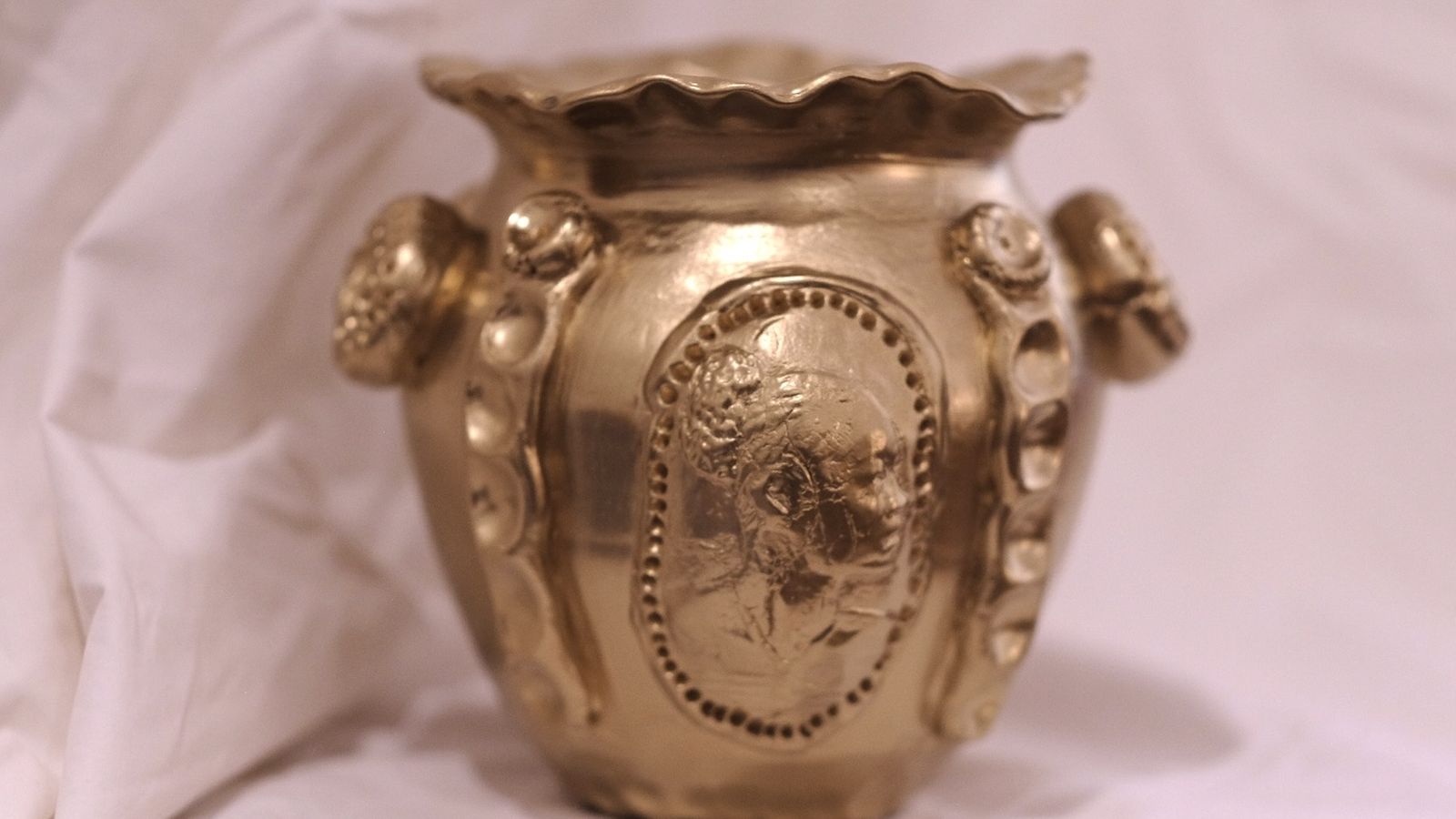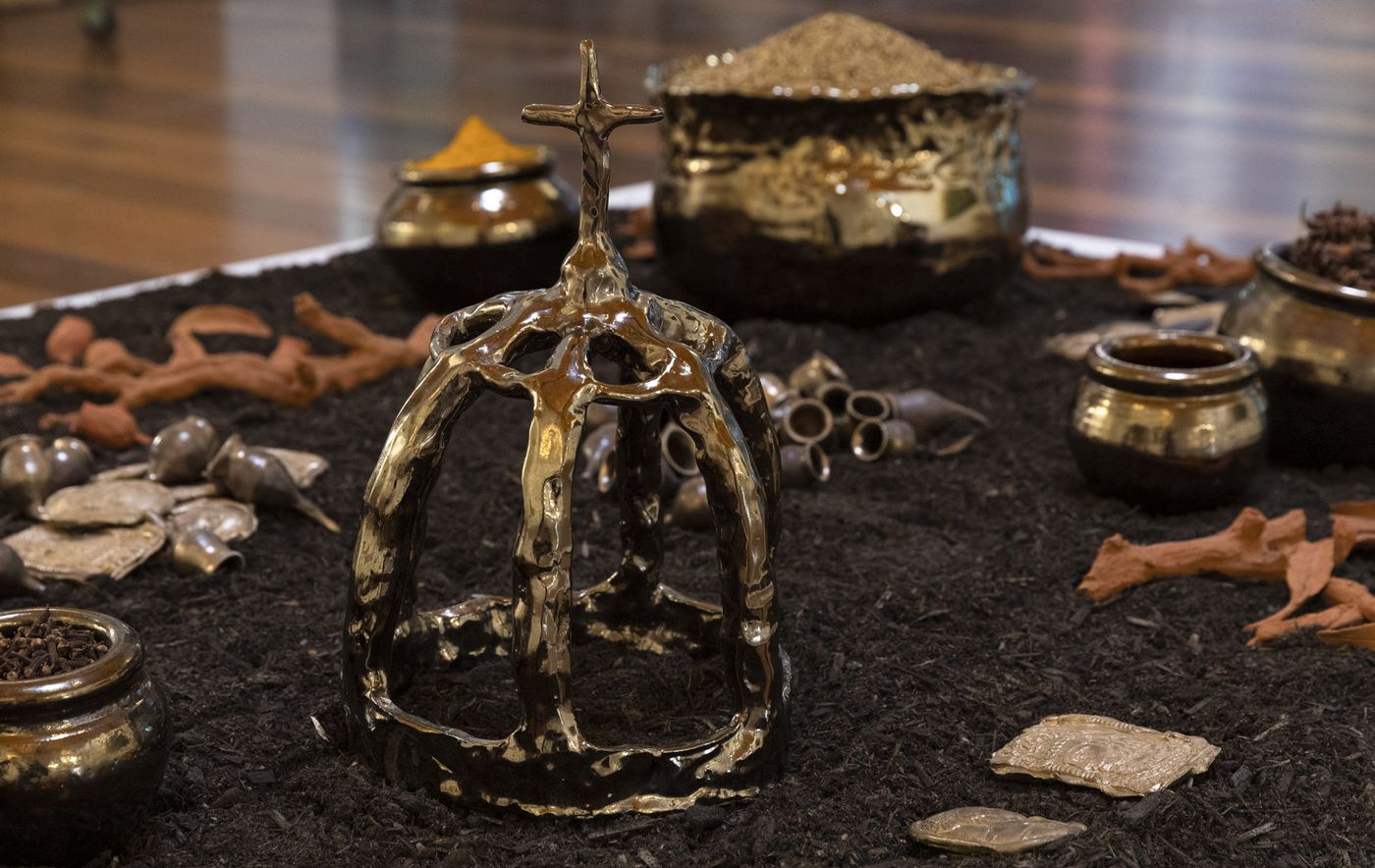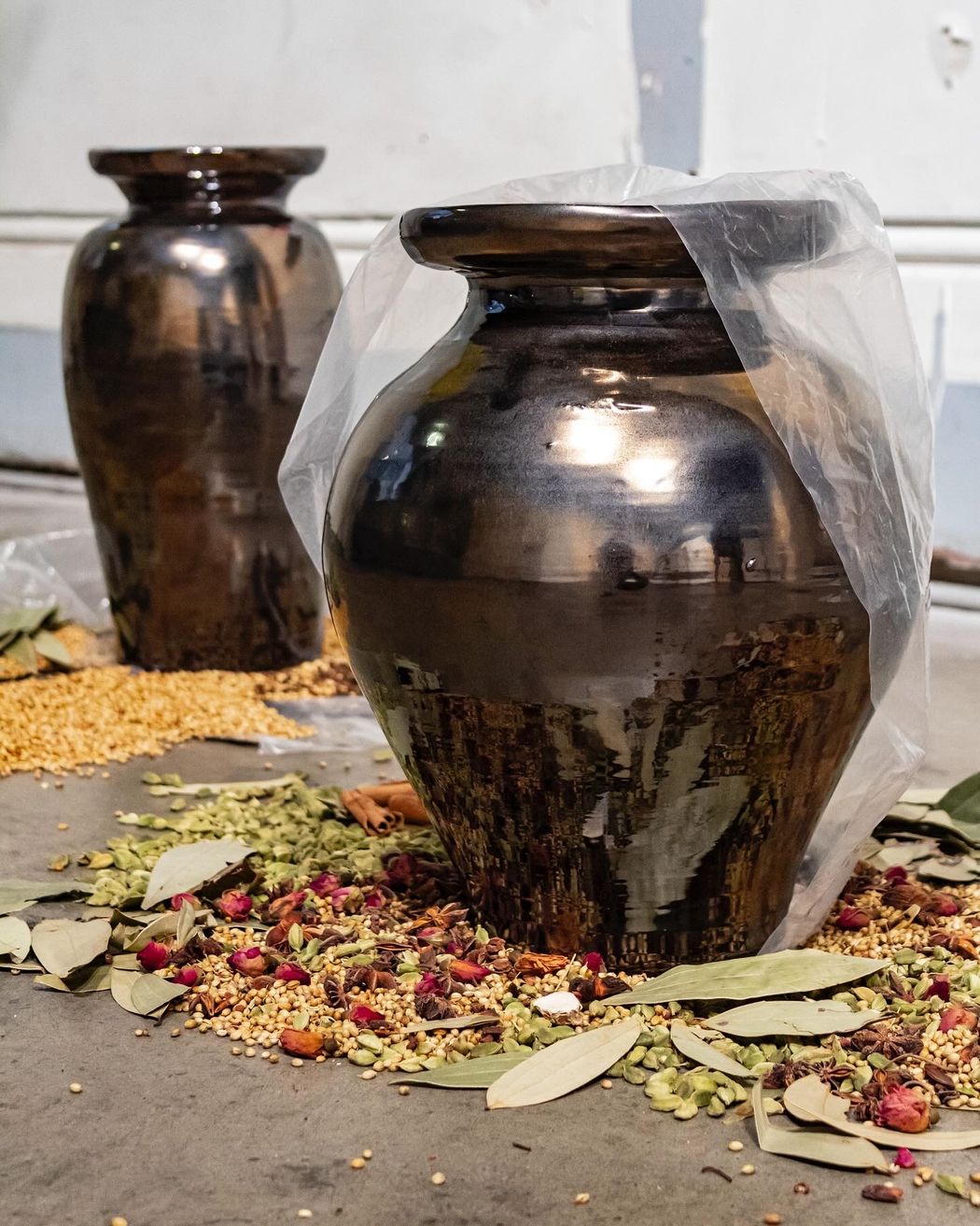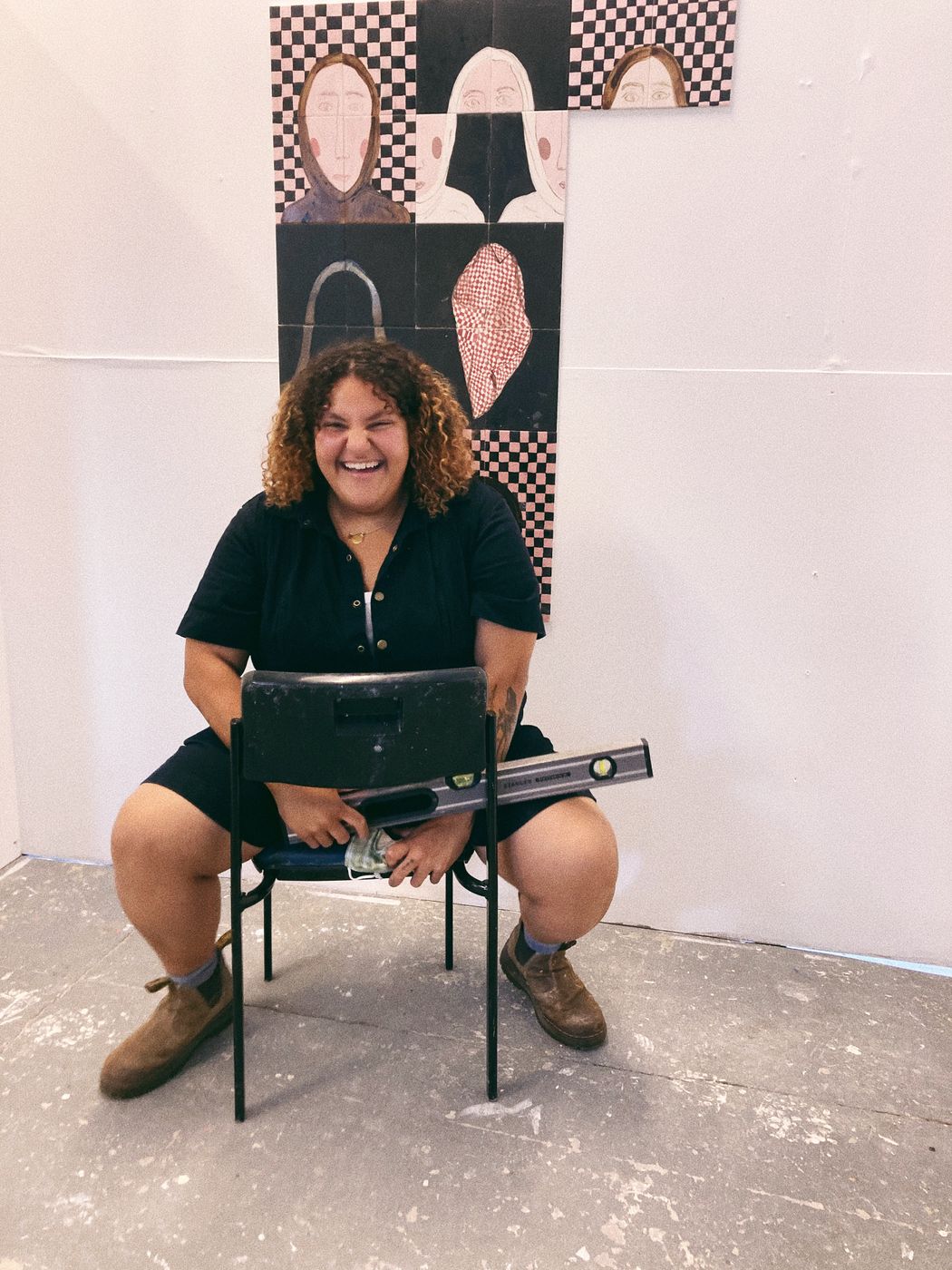Maker Profiles: rachel farag

As part of rachel farag's work رُفات قِدّيسٍ (rufat qiddys: object of a holy person), now on in Object Space, ADC's Communications Producer Laura Wesolowski asked rachel three quick-fire questions to find out what inspires her as an artist.
What do you make?
"I make objects, relics, from clay. Using a combination of wheel throwing, hand building and press moulds made from objects and souvenirs found around my childhood home."

Silversalt Photography. Courtesy Hazelhurst Arts Centre
Why do you make what you make?
“I make these relics to assert the existence of people like me. There is such little public, monumental celebration of Black and Brown people, let alone queer people. My ancient ancestors used clay for many practical and artistic purposes, objects that document their history and existence in a material that has stood the test of time. From these objects we learn that Ancient Egyptians in particular were undeniably very queer in the expression of gender and sexuality (despite the denial of this in mainstream history books). Additionally, many queer people have experienced religion growing up and in my experience "Gay/Lesbian" was synonymous with "abomination". I have appropriated religious iconography to question this constructed reverence for a white washed Jesus, to say that queer people have the right to participate in divinity too, in whatever form that takes.
If white men can monumentalise and celebrate themselves for genocidal acts then, I too, can monumentalise the divine and beautiful existence of Black and Brown Lesbian Women/ People Firing these objects is not a decision taken lightly, they will remain in the world forever. I have made the decision to fire these objects because people like me have always existed and will exist forever.“

rachel farag, preview, photo: Courtesy of the Artist.
What inspires you?
“I am inspired by the maximalist aesthetic of Ancient Egyptian and Ethiopian iconography. In particular, the interior of Pyramids in Cairo are incredibly detailed and embellished liberally with gold. I adore the tablets they created that told stories in such a visual way and the forms of ancient terracotta pots. I first saw these in real life in the Cairo Museum, sitting behind glass cabinets telling us so viscerally about ancient life. Ancient Ethiopian Christian and Ancient Egyptian Fayum illustrations inspired the idea to use portraits as remembrance. The greatest joy of creating these objects is the ability to publish a record of our existence, to take up space, to celebrate, to make someone feel seen. I didn't have these things growing up, but I aspire to ensure that the coming generations do.”

rachel farag, Portrait. Photo: Courtesy of the Artist.
Thanks rachel!
Learn more about rachel farag and her work, follow her on Instagram below.
